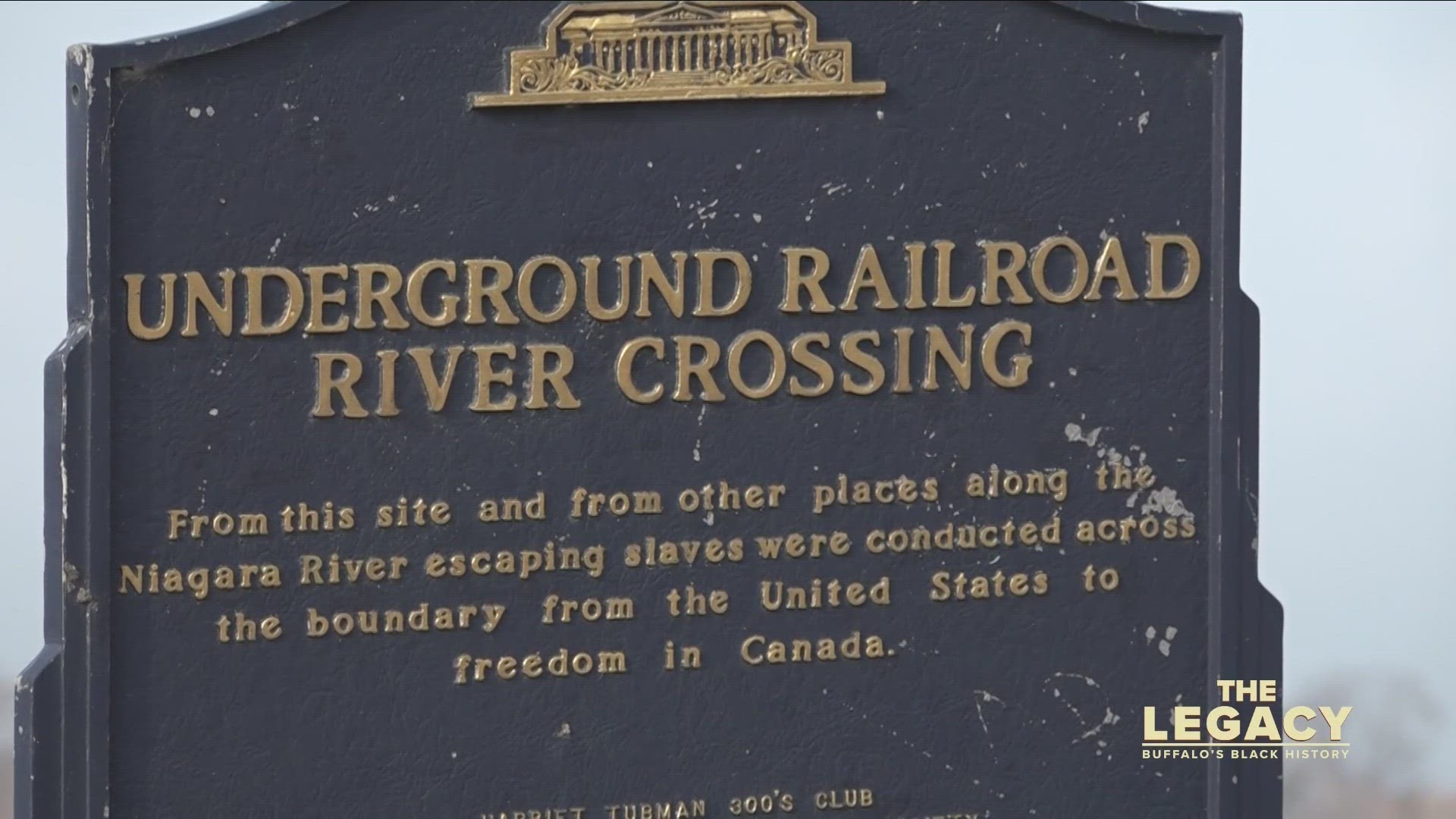BUFFALO, N.Y. — Michael Broderick doesn't remember the first time his family was approached about renaming Broderick Park, but he does remember the last.
"At times we were a little hesitant ... you know, driving by and seeing our name up on the sign for the park, we took some pride in that," Broderick said.
For as long as he can remember the park has been named after his great-grandfather and namesake, Michael J. Broderick, a founder of the West Side Rowing Club.
The club was located in what is currently the park in 1912, at the foot of Ferry Street along the Niagara River and Black Rock Canal. In 1975, a fire destroyed the club's building and was moved upriver to a new location that they still call home.
Broderick recalls that rowing traffic shifted drastically to the club's new location and the southern tip of Unity Island, which would eventually be named Broderick Park, was embraced by the African-American community.
The site long before rowing was a terminus of the Underground Railroad.
"As proud as we were, and as proud as we are being named after my great grandfather ... we realized it was time," Michael Broderick said.
His family gave their blessing to a group called "Friends of Broderick Park," who over the years have been caretakers and visionaries for the space.
Harrowing journey
"When they looked across that river, they saw freedom," said Christopher Lawson, a board member for the group.
Long before the park ever had a name, in the early 1800s and up until the American Civil War, the area was a gathering place for enslaved African-Americans who had escaped the South and sought freedom in Canada.
Enslaved people were taken across the Niagara River by the likes of the Black Rock Ferry and other kind souls assisting along the Underground Railroad. Further north on Unity Island, a community was even built to temporarily house individuals looking to escape slavery.
"We really consider this as sacred ground," said George Johnson, the executive director for "Friends of Broderick Park."
The history of the park is told inside its Underground Railroad Museum which was finished in 2017. The park is also designated as an Underground Railroad Network to Freedom site by the National Parks Service.
In the early 2000s, the Buffalo Quarters Historical Society staged reenactments of the trip from Broderick Park to Fort Erie, Ontario, but after 9/11 Johnson said they were stopped for security reasons.
The crossings in reality were a story of hope and tragedy.
"Some people tried to swim over, some people tried to swim over on logs," Lawson said.
"A lot of people didn't make it as they tried to cross the other side," Johnson added.
The number of freedom seekers who didn't make it across the Niagara River isn't truly known, Lawson said, given the secret nature of the Underground Railroad, not to mention the many more who were found and captured by bounty hunters acting under the 1850 Fugitive Slave Act.
Many people did make it across, however. Along the entire Niagara River, it's estimated that tens of thousands of enslaved African Americans made it to freedom.
A new chapter
On Oct. 31, 2023, after months and even years of discussion, the Buffalo Common Council signed off on a resolution renaming Broderick Park to Freedom Park.
Common Council President Darius Pridgen noted during the meeting: "This is just an example of who Buffalo really is. That the Broderick family would say, 'We agree with Freedom Park.' "
Councilmember David Rivera was the man who facilitated discussions between the parties involved. The park is located in the Niagara District, which Rivera represents.
"It's so significant. We want people to know that this is part of the Underground Railroad, that this was the terminus and what occurred here on this hallowed ground," Rivera said.
George Johnson added: "We're not trying to erase history. History is what it is we're just trying to make sure it is recognized."
New signage replacing the name "Broderick" with "Freedom" is already planned for the park, and folks like Johnson and Lawson will continue their work preserving and teaching others about the park's entire history.
That includes installing a new plaque commemorating the Broderick family.
So, what does Michael Broderick think?
"This is an important area to the African-American population and to the American story as a whole ... and we just want to support it and support them," Broderick said.
Recognition that what happened in the past is just as important as the future.
In honor of Black History Month, the park's Underground Railroad Museum will be open every Saturday through February at 10 a.m.

